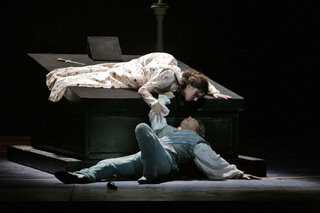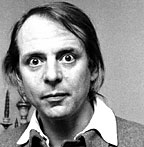New Arts Recipients of the Order of Canada
Notable amongst the recipients are the following for arts related activities:
- Michael Snow, C.C., Toronto, Ontario, Companion of the Order of Canada. For his contributions to international visual arts as one of Canada's greatest multidisciplinary contemporary artists. This is a promotion within the Order. See official bio and wiki bio.
-
Marie Chouinard, O.C., Montreal, Quebec, Officer of the Order of Canada.
For her contributions to modern dance as an internationally renowned dancer and choreographer. See bio and official website -
Douglas Gordon (D.G.) Jones, O.C., North Hatley, Quebec, Officer of the Order of Canada. For his contributions to Canadian literature as an influential poet, mentor, editor and translator. See wiki bio
-
Donat Lacroix, O.C., Caraquet, New Brunswick, Officer of the Order of Canada. For his contributions to the promotion of Acadian culture and traditions, through his songs and poetry.
-
Grant Munro, O.C., Westmount, Quebec, Officer of the Order of Canada. For his innovative contributions in the fields of animation and filmmaking throughout his 45-year career with the National Film Board of Canada. See bio.
-
Adrianne Pieczonka, O.C., Toronto, Ontario, Officer of the Order of Canada. For her contributions as one of the top opera singers of her generation and as an artistic ambassador for Canada. Official website.
Steven Staryk, O.C., Scottsdale, Arizona, U.S.A. and Toronto, Ontario, Officer of the Order of Canada. For his contributions as a musician, concertmaster and teacher, and as one of Canada's most-recorded violinists. See bio.
-
Jeff Wall, O.C., Vancouver, British Columbia, Officer of the Order of Canada. For his contributions as an influential art photographer whose work has been exhibited around the world, and for his mentorship of a generation of young artists. See wiki bio
-
Garry W. Anderson, C.M., Cranbrook, British Columbia, Member of the Order of Canada. For his contributions to heritage conservation, notably as the driving force behind the creation of the Canadian Museum of Rail Travel and the Cranbrook Archives, Museum and Landmark Foundation.
-
John Barron, C.M., Komoka, Ontario, Member of the Order of Canada. For his contributions to music education and choral development for young people in Canada.
-
Carol Gay Bell, C.M., Regina, Saskatchewan, Member of the Order of Canada. For her contributions as an artistic director who has promoted and developed young actors, singers and dancers in Saskatchewan. See bio
-
Hélène-Andrée Bizier, C.M., Montreal, Quebec, Member of the Order of Canada.
For her contributions to promoting Quebec's history and culture through her books and multimedia products. See wiki bio. -
Thea Borlase, C.M., Moncton, New Brunswick, Member of the Order of Canada. For her contributions to culture in New Brunswick, particularly for her role in developing artists from the province's two cultural and linguistic communities.
-
Marcien Ferland, C.M., La Salle, Manitoba, Member of the Order of Canada. For his contributions to the preservation and promotion of the Franco-Manitoban and Métis cultures, as choir director, composer and founder of the Chorale des Intrépides. See bio.
-
Mallory Gilbert, C.M., Toronto, Ontario, Member of the Order of Canada. For her contributions to the success of Toronto's Tarragon Theatre, and for helping foster a vibrant national theatre scene.
-
Valerie Hussey, C.M., Toronto, Ontario, Member of the Order of Canada.
For her contributions to the development of Canadian children's fiction and non-fiction as head of a major children's publishing house, and for her work as a dedicated volunteer with industry and non-profit organizations. -
Bruce Pullan, C.M., Delta, British Columbia, Member of the Order of Canada.
For his contributions to the development of singers of all ages, as a professor of music and as a founder and director of numerous choirs. See bio -
Paul Shaffer, C.M., Bedford, New York, U.S.A. and Thunder Bay, Ontario, Member of the Order of Canada.
For his contributions as an internationally renowned musician who has also shared his time and talents with educational, health care and arts groups, notably as a supporter of Epilepsy Canada, the Kiwanis Music Festivals of Canada and Lakehead University. -
Jeffrey Spalding, C.M., Calgary, Alberta and Jeddore, Nova Scotia, Member of the Order of Canada.
For his contributions as a champion of Canadian artists, notably as a curator who has developed popular exhibitions that have attracted new audiences to Canadian art galleries. See bio -
T. Kenneth Thorlakson, C.M., Winnipeg, Manitoba, Member of the Order of Canada.
For his contributions as a volunteer and fundraiser dedicated to the preservation and promotion of Icelandic heritage and culture in Manitoba. -
Richard B. Wright, C.M., St. Catharines, Ontario, Member of the Order of Canada.
For his contributions as a writer of modern fiction, whose many novels, including the award-winning Clara Callan, have enriched Canadian literature. See wiki bio
Labels: awards, honours, order of canada





















